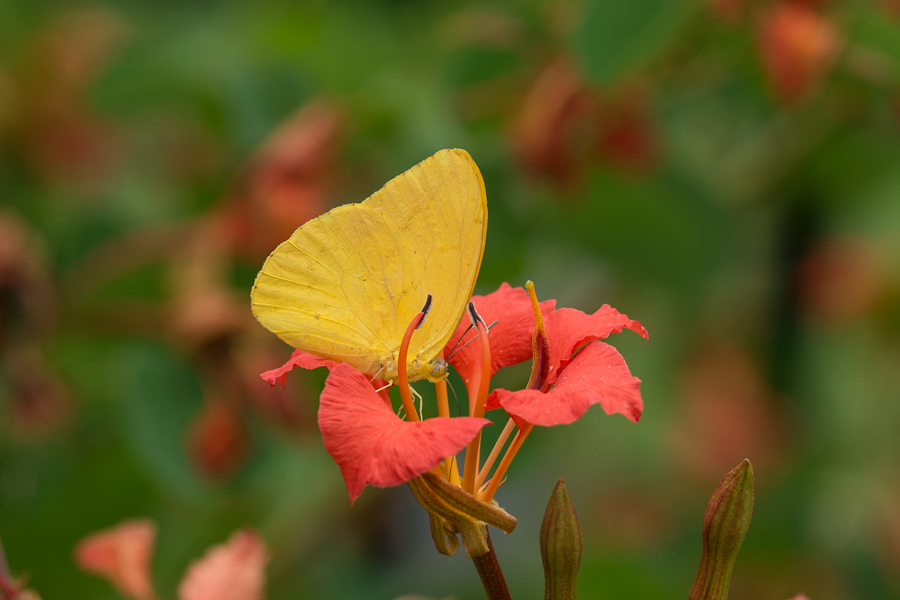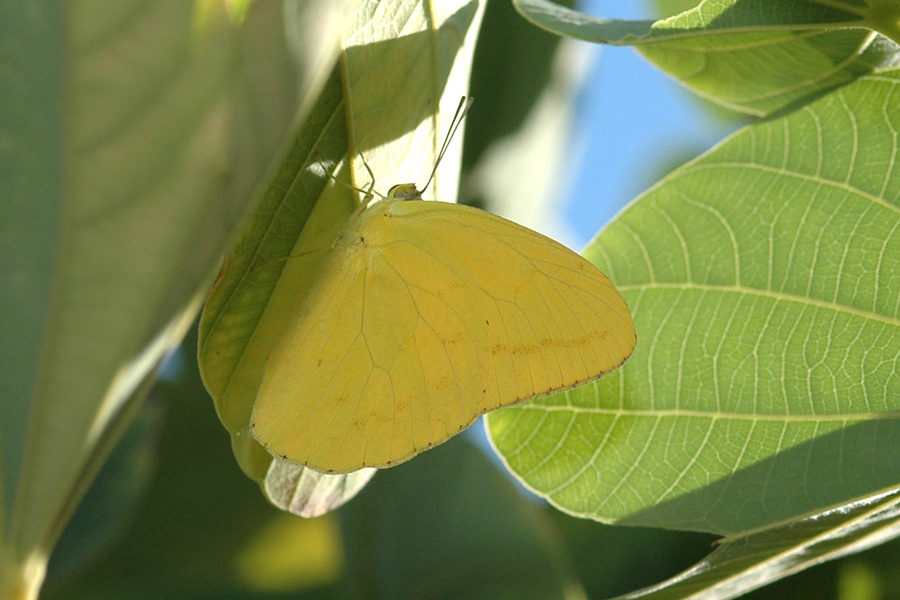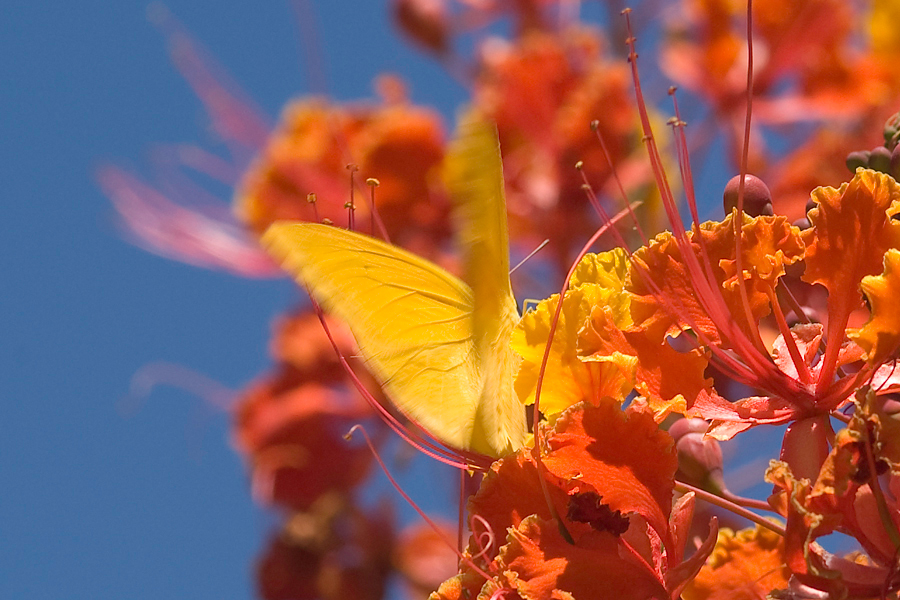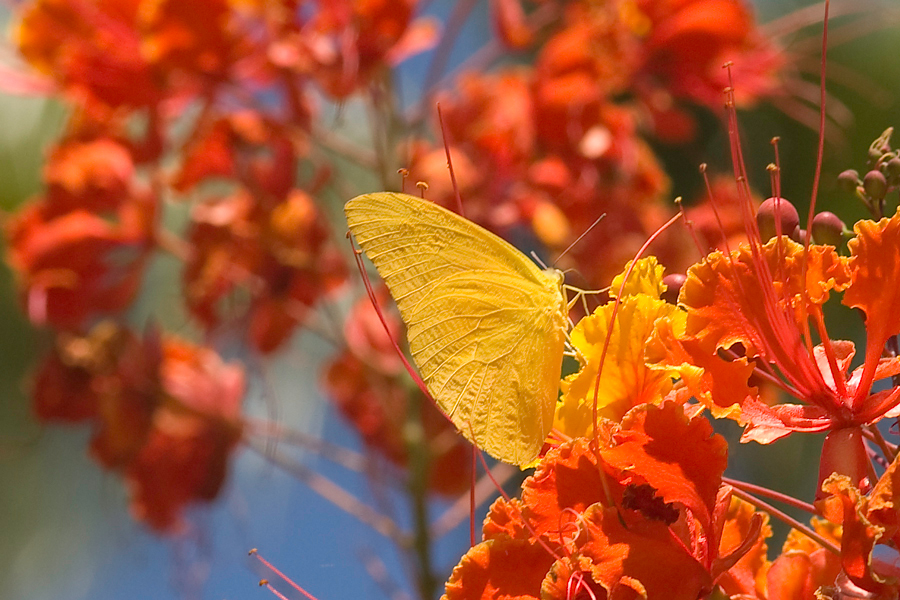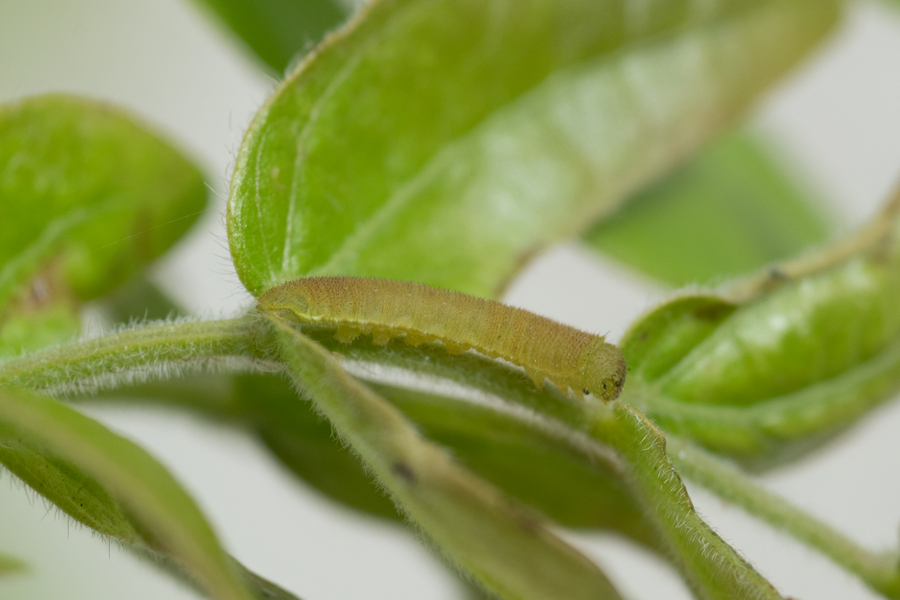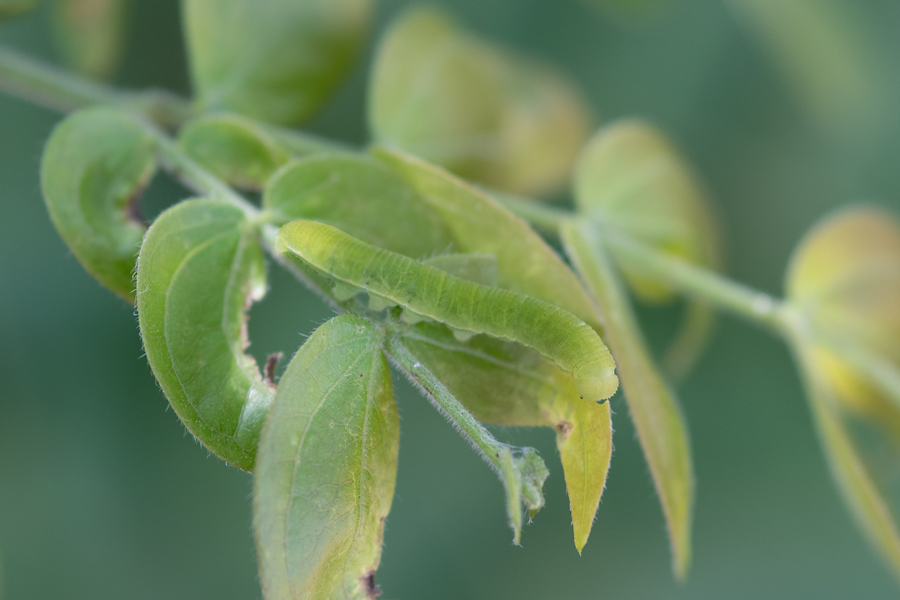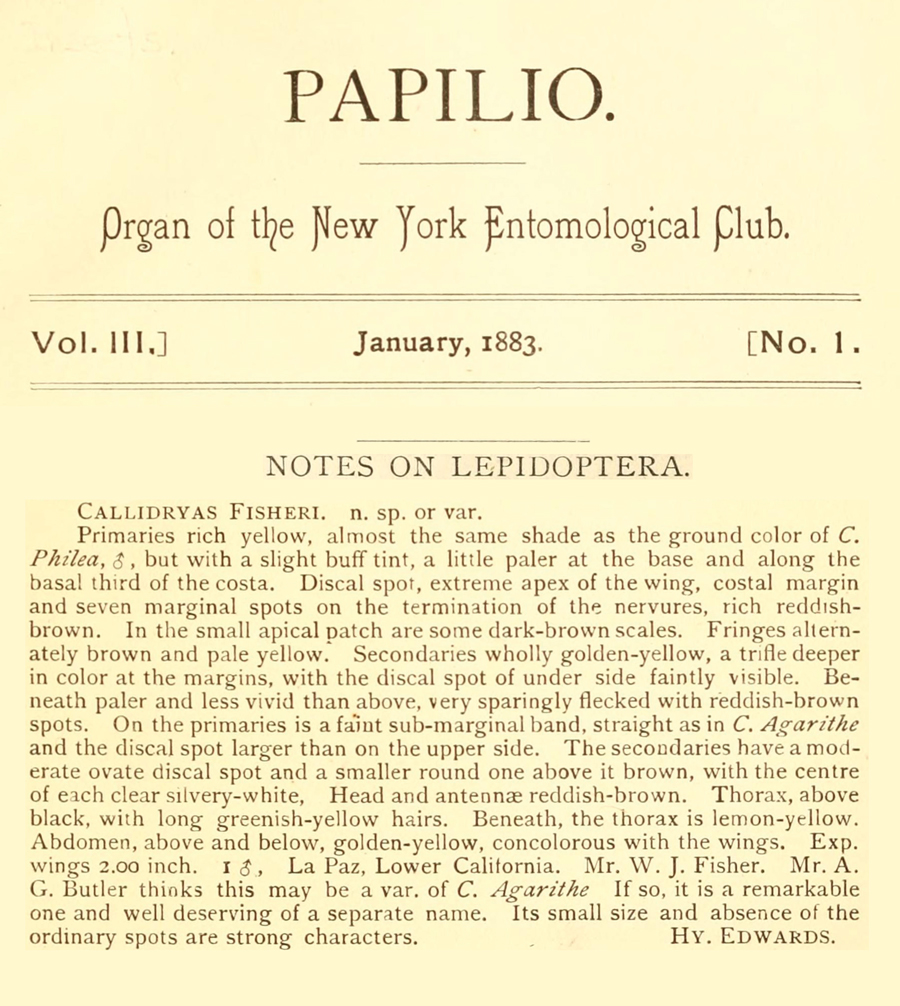Phoebis agarithe fisheri
Large Orange Sulphur
A classic case of a butterfly that followed exotic plants into the state. Once a very rare stray, this is now a common butterfly much of the year in Palm Desert and a few other places where non-native landscaping plants in the Fabaceae family (such as Pithecellobium dulce trees) are now widespread. These may be confused with cloudless sulphurs in our area, but the unbroken line visible on the ventral side of the forewing distinguishes it from the cloudless, which has a broken line. Large orange sulphurs tend to be larger as well, and a bolder yellow color, especially the females.
These have become established in Palm Desert, where ornamental plantings of various desert legumes are everywhere. The butterfly seems particularly attached to Calliandra haematocephala, red powder puff, which is an increasingly popular non-native legume in the desert and beyond. It's the only plant I've seen larvae develop on, though females may oviposit on related plants. It took me several years to figure out the relationship between these exotic yellow butterflies in Palm Desert and what plants they favored. Calliandra seems to be the one. I even see this plant now at my local golf course's restaurant parking lot in Long Beach, and I picked one up at a local nursery. It makes a great vine on fences, and is a lush green year-round.
I finally was able to get a positive identification of a large orange sulphur in my garden in Long Beach on January 1st, 2024. I had been seeing sulphurs that looked different from the usual cloudless sulphurs around; they were a bit more orange than the yellow cloudless sulphur males. Looking at iNaturalist, it is clear that these are being seen now across southern California, probably thanks to widespread ornamental planting of the same kind of desert-adapted leguminous shrubs and trees that drew them to Palm Desert several years ago. I've certainly seen these same imports take hold in yards around Long Beach in recent years. In late 2025, I finally began finding eggs and caterpillars easily, so I should have a full account of the life cycle before too long.

